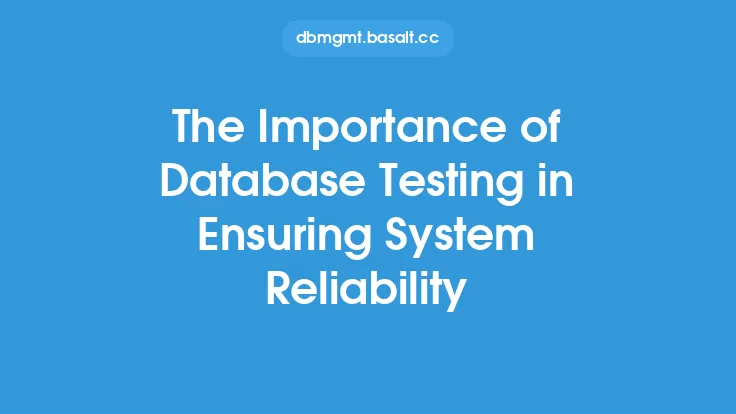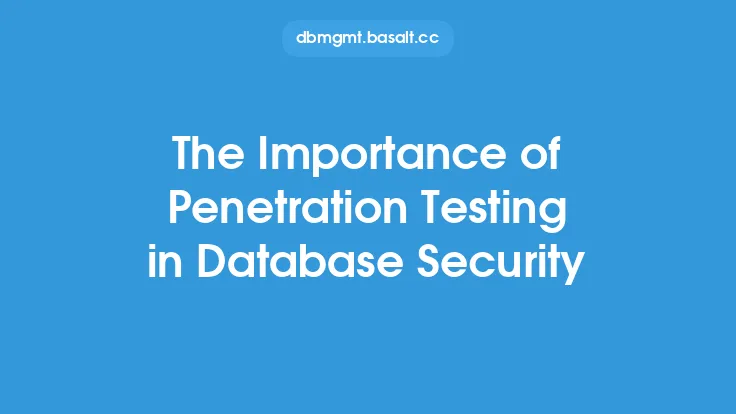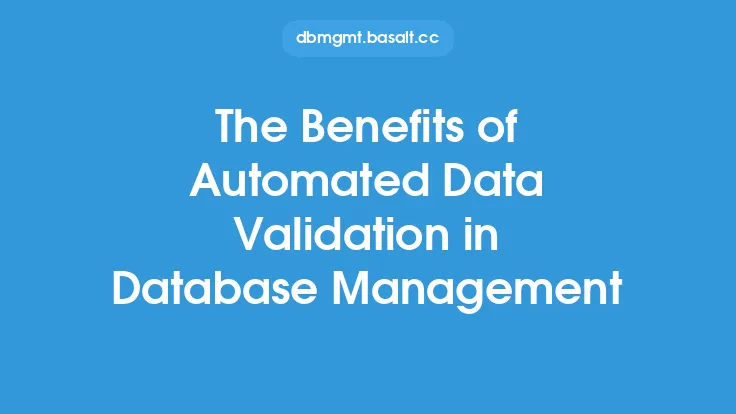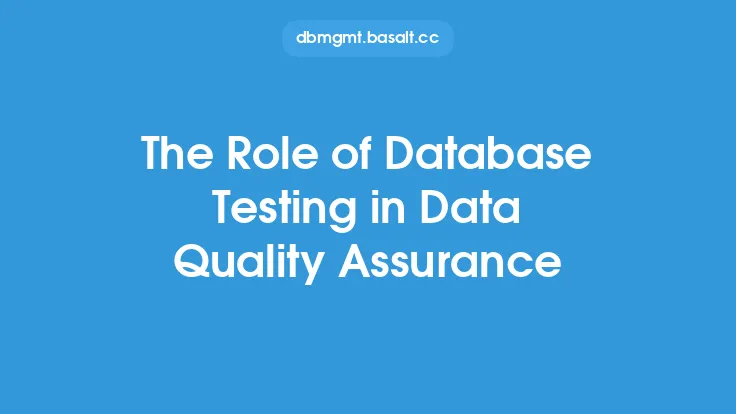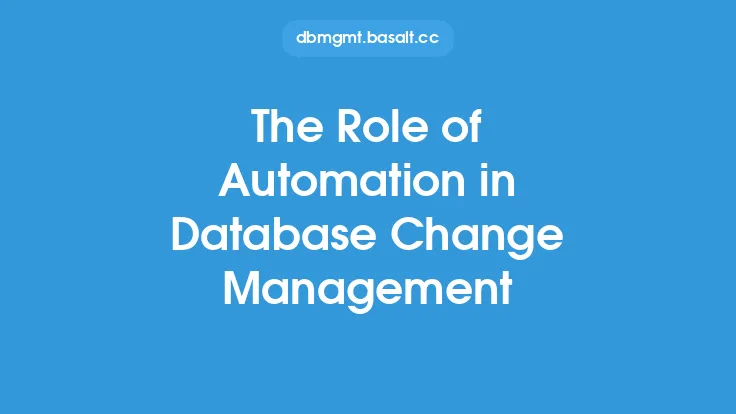In today's fast-paced software development landscape, agile methodologies have become the norm. Agile development emphasizes speed, flexibility, and collaboration, allowing teams to respond quickly to changing requirements and deliver high-quality software faster. However, this approach also introduces new challenges, particularly when it comes to database testing. Continuous database testing is an essential practice that ensures the integrity, performance, and reliability of databases in agile development environments. In this article, we will delve into the benefits of continuous database testing and explore how it can help teams deliver better software faster.
Introduction to Continuous Database Testing
Continuous database testing is the process of automatically testing databases at every stage of the development lifecycle. This approach involves integrating database testing into the continuous integration and continuous deployment (CI/CD) pipeline, ensuring that databases are tested frequently and consistently. By doing so, teams can identify and fix errors early, reducing the risk of downstream problems and improving overall software quality. Continuous database testing involves a range of activities, including unit testing, integration testing, and performance testing, all of which are designed to validate database functionality, performance, and security.
Benefits of Continuous Database Testing
The benefits of continuous database testing are numerous and significant. Firstly, it helps to ensure data integrity by validating database schema, data relationships, and data consistency. This is particularly important in agile development environments, where frequent changes to the database schema can introduce errors and inconsistencies. Continuous database testing also improves database performance by identifying bottlenecks and optimizing queries, indexes, and other database components. Additionally, it enhances security by testing database permissions, access controls, and encryption, reducing the risk of data breaches and other security threats.
Improved Collaboration and Communication
Continuous database testing also promotes improved collaboration and communication among team members. By integrating database testing into the CI/CD pipeline, teams can ensure that all stakeholders, including developers, QA engineers, and database administrators, are working together to deliver high-quality software. This approach helps to break down silos and foster a culture of collaboration, where team members can share knowledge, expertise, and feedback to improve the overall software development process. Furthermore, continuous database testing provides a common language and set of metrics, allowing teams to communicate more effectively and make data-driven decisions.
Reduced Risk and Increased Confidence
Another significant benefit of continuous database testing is reduced risk and increased confidence. By testing databases frequently and consistently, teams can identify and fix errors early, reducing the risk of downstream problems and improving overall software quality. This approach also provides teams with greater confidence in their software, knowing that databases have been thoroughly tested and validated. Additionally, continuous database testing helps to reduce the risk of data loss, corruption, or other disasters, providing teams with a safety net and peace of mind.
Technical Benefits
From a technical perspective, continuous database testing offers several benefits. Firstly, it allows teams to test databases in a variety of environments, including different operating systems, databases, and hardware configurations. This approach helps to ensure that databases are compatible with different environments and can perform optimally in a range of scenarios. Additionally, continuous database testing enables teams to test databases at scale, simulating large volumes of data and user activity to ensure that databases can handle heavy loads and perform well under pressure. Furthermore, this approach allows teams to test databases using a range of tools and technologies, including automated testing frameworks, continuous integration tools, and cloud-based services.
Best Practices for Implementing Continuous Database Testing
To implement continuous database testing effectively, teams should follow several best practices. Firstly, they should integrate database testing into the CI/CD pipeline, ensuring that databases are tested frequently and consistently. Secondly, they should use automated testing frameworks and tools to streamline the testing process and reduce manual effort. Thirdly, they should test databases in a variety of environments and scenarios, including different operating systems, databases, and hardware configurations. Finally, they should monitor and analyze test results, using data and metrics to inform decision-making and improve the overall software development process.
Overcoming Challenges and Limitations
While continuous database testing offers numerous benefits, it also presents several challenges and limitations. Firstly, it requires significant investment in tools, technologies, and personnel, which can be costly and time-consuming. Secondly, it demands a high degree of automation, which can be difficult to achieve, particularly in complex database environments. Thirdly, it requires teams to have a deep understanding of database testing principles, methodologies, and tools, which can be a challenge, particularly for teams with limited experience or expertise. Finally, it necessitates a cultural shift, where teams prioritize database testing and integrate it into the overall software development process, which can be difficult to achieve, particularly in traditional or legacy environments.
Conclusion
In conclusion, continuous database testing is a critical practice that ensures the integrity, performance, and reliability of databases in agile development environments. By integrating database testing into the CI/CD pipeline, teams can identify and fix errors early, reduce the risk of downstream problems, and improve overall software quality. Continuous database testing offers numerous benefits, including improved collaboration and communication, reduced risk and increased confidence, and technical benefits, such as testing databases in a variety of environments and scenarios. While it presents several challenges and limitations, teams can overcome these by following best practices, investing in tools and technologies, and prioritizing database testing in the overall software development process. By adopting continuous database testing, teams can deliver better software faster, with greater confidence and reduced risk.
